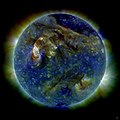Skeda:Sun - August 1, 2010.jpg

Madhësia e këtij shikimi: 673 × 599 pixel. Rezolucione të tjera: 270 × 240 pixel | 539 × 480 pixel | 862 × 768 pixel | 1.150 × 1.024 pixel | 2.300 × 2.048 pixel | 4.095 × 3.647 pixel.
Dokument origjinal ((përmasa 4.095 × 3.647 px, madhësia skedës: 1,39 MB, lloji MIME: image/jpeg))
Historiku skedës
Shtypni mbi një datë/kohë për ta parë skedën siç ishte atëherë.
| Data/Koha | Miniaturë | Përmasat | Përdoruesi | Koment | |
|---|---|---|---|---|---|
| e tanishme | 22 maj 2012 21:25 |  | 4.095 × 3.647 (1,39 MB) | Rainald62 | Several rounds of editing, especially the last one, degraded the quality. I went back to the original (NASA) version, applied only clipping (removing the earth at the lower right corner) and very minor compression keeping much more detail. |
| 14 mars 2011 19:36 |  | 4.096 × 4.096 (944 KB) | A7N8X | correct contrast | |
| 12 gusht 2010 15:34 |  | 4.096 × 4.096 (4,42 MB) | Hive001 | took Earth out | |
| 9 gusht 2010 14:36 |  | 4.096 × 4.096 (4,23 MB) | Hive001 | ||
| 9 gusht 2010 14:17 |  | 4.096 × 4.096 (3,88 MB) | Hive001 | {{Information |Description={{en|1=On August 1, 2010, almost the entire Earth-facing side of the sun erupted in a tumult of activity. This image from the Solar Dynamics Observatory of the news-making solar event on August 1 shows the C3-class solar flare ( |
Lidhje skedash
Këto faqe lidhen tek kjo skedë:
Përdorimi global i skedës
Kjo skedë përdoret nga Wiki të tjera në vijim:
- Përdorimi në ar.wikipedia.org
- Përdorimi në ast.wikipedia.org
- Përdorimi në bg.wikipedia.org
- Përdorimi në ca.wikipedia.org
- Përdorimi në ckb.wikipedia.org
- Përdorimi në co.wikipedia.org
- Përdorimi në de.wikipedia.org
- Përdorimi në en.wikipedia.org
- Talk:Solar flare
- Extreme ultraviolet
- Wikipedia:Featured pictures/Space/Understanding
- User talk:Hive001
- User:Hive001/Maturation Chamber
- Wikipedia:Featured pictures thumbs/24
- Wikipedia:Featured picture candidates/August-2010
- Wikipedia:Featured picture candidates/Sun - August 1, 2010.jpg
- Wikipedia talk:Featured picture candidates/Archive 31
- Wikipedia:Wikipedia Signpost/2011-04-04/WikiProject report
- Wikipedia:Picture of the day/May 2012
- User:Xophist/s0
- Template:POTD/2012-05-21
- Wikipedia:Main Page history/2012 May 21
- Wikipedia:Wikipedia Signpost/Single/2011-04-04
- User:Huggums537
- Përdorimi në en.wikiversity.org
- Përdorimi në es.wikipedia.org
- Përdorimi në fa.wikipedia.org
- Përdorimi në fa.wikibooks.org
- Përdorimi në hr.wikipedia.org
- Përdorimi në id.wikipedia.org
- Përdorimi në ja.wikipedia.org
- Përdorimi në kab.wikipedia.org
- Përdorimi në ka.wikipedia.org
- Përdorimi në km.wikipedia.org
- Përdorimi në kn.wikipedia.org
- Përdorimi në ko.wikipedia.org
Shikoni më shumë përdorim global të kësaj skede.


